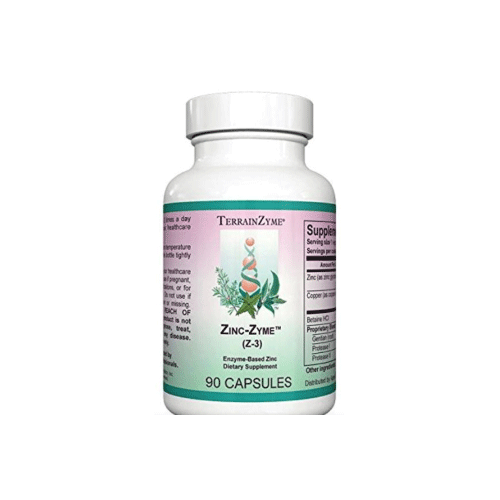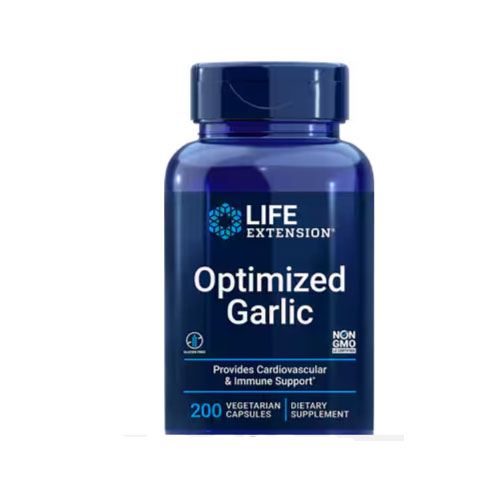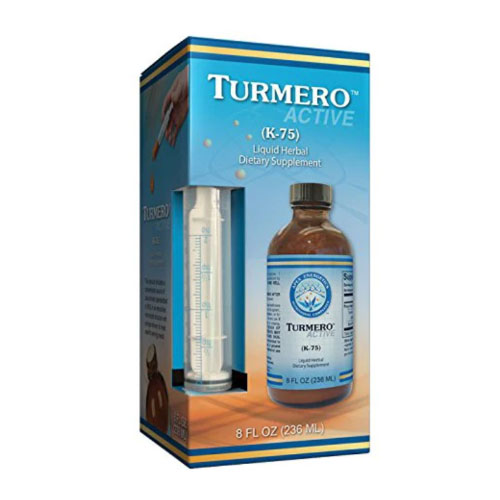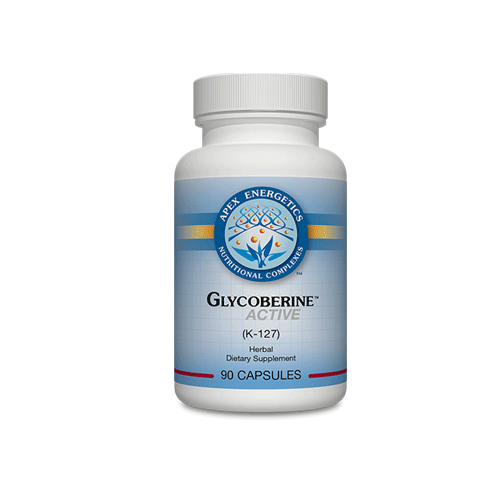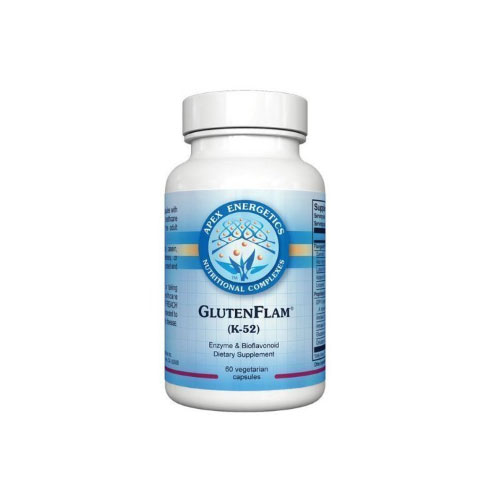The Sex Hormones:
4 C: Estrogen
A (not so) funny thing happens to women as they approach middle age. After the biological changes of puberty, after the childbearing years, after the career is launched, the job and family fortune secured, and the promise of youth gives way to “I’ve made it,” what next, settles in, she notices her temper becomes short, her cycles become erratic, her muscles begin to shrink, her sexual desire can slacken, she tires easily, gains weight, especially around the middle, doesn’t sleep well, has hot flashes, night sweats, and can become overtly depressed. What’s going on?
The I Ching, China’s oldest text, presents us with the perfect explanation of this phenomena. Qi, or “life force,” describes, for women, seven (as opposed to eight for men) year cycles or patterns of evolution. (1)
- A woman’s Kidney energy becomes prosperous at seven years of age (1×7).
- Her menstruation appears as the Ren (sea of yin) channel flows and the Chong (sea of blood) channel becomes prosperous at the age of 14 (2×7).
- Her Kidney qi reaches a balanced state, and her teeth are completely developed at the age of 21 (3×7).
- Her vital energy and blood are substantial; her four limbs are strong and the body is at optimal condition at the age of 28 (4×7).
- Her peak condition declines gradually. The yang Ming channel is depleted, her face withers and her hair begins to fall out at the age of 35 (5×7).
- Her three yang channels, tai yang, yang Ming and shao yang, begin to decline. Her face complexion wanes and her hair turn white at the age of 42 (6×7).
- The Ren and Chong channels are both declining, her menstruation ends, her physique turns old and feeble, and she can no longer conceive at the age of 49 (7×7).
Chi Po, the Yellow Emperor’s scribe, who recorded the I Ching, the wisdom of the Yellow Emperor of China, circa 1070 BCE, specifically highlighted cycle 4 when the body is best developed (age 28), and 5, (age 35) when the kidney energy begins its’ descent, with thinning hair and withering teeth.
Beginning around age 35 or so, our brain, and the rest of our systems, begin to wither. In the past, this natural “shelf life” was accepted as entirely “normal” and natural. As we extend life towards 100 years of age and beyond, those of us in the “middle” want and need to remain vibrant, healthy and productive.
Enter Bioidentical Hormone Replacement Therapy. Like a finely tuned, high end automobile, our bodies need certain fluids and filters to operate at maximum capacity. A Chevy, or Maserati needs oil, brake fluid, transmission fluid to function optimally. Women need certain levels of estrogen, progesterone, testosterone, DHEA, Vitamin D, adequate thyroid hormones, peak nutrients, and low levels of inflammation to function optimally.
What is Menopause?
Menopause is the time of life when, due to declining ovarian function, the female sex hormones diminish. Menopause is defined as no menses for 1 year. Perimenopause is the 5‐10 years surrounding menopause. The average age for the climacteric is 51 years old but can happen anytime between age 35 and 55. Smokers, on average, experience menopause at an earlier age. (2)
Menopausal symptoms begin with subtle changes in the perception of body warmth followed by a sudden break into a cold sweat. (i.e. “hot flashes.”) Other symptoms include sleep disturbances, dry skin and vaginal dryness, “brain fog,” low or absent libido, osteoporosis, headaches, anxiety and depression, weight gain, joint pain, fatigue, muscle weakness, palpitations, urinary incontinence, fibromyalgia, allergies, craving for sweets, irritability, cold extremities, scalp hair loss, swelling around the eyes and abnormal blood lipids. Everything told, the Physician’s Guide to Anti-Aging and Regenerative Medicine; 2009 lists 36 separate menopausal symptoms. (2)
Menopausal Symptoms
| Hot Flashes
Night Sweats Vaginal Dryness Anxiety Mood Swings Panic Attacks Weird Dreams Lower Back Pain Bloating |
Irritability
Insomnia Depression Loss of Sexual Interest Painful Intercourse Hair Growth on Face Urinary Tract Infections Vaginal Itching |
Importance of Estrogen
Estrogen has some 400 identified functions in the body including metabolic rate, improved insulin sensitivity, body temperature regulation, muscle maintenance, improved sleep, increased blood flow, decreased incidence of blood clots, decreased accumulation of arterial plaque, and preserving the amount of collagen in the skin.
Estrogen protects against heart disease, stroke, colon cancer, osteoporosis, urinary infections, Alzheimer’s disease, macular degeneration and cataracts.
Estrogen deficiency results in urinary incontinence, sagging skin and breasts, increased facial wrinkles, fatigue, depression, mood swings, and decreased libido.
Estrogen, in nature, occurs as three distinct molecules. Estrone (E1) is the main estrogen the body produces after menopause. E1 acts as an estradiol (E2) reservoir as it converts to stone sulfate, where it lies in the cells awaiting conversion to the active estradiol (E2) when needed. High levels of E1 may increase the risk of breast cancer.
Estradiol (E2) is the principal active estrogenic compound. E2 acts an antioxidant, increasing “good” cholesterol (HDL), reducing triglycerides, LDL and total cholesterol. It aids in memory preservation (by increasing serotonin levels in the brain), aids in maintaining bone structure, aids in the absorption of calcium, magnesium and zinc.
Estriol (E3), generated in the placenta, is significantly elevated during pregnancy. E3 acts to protect against breast cancer, (3) maintains pregnancy, controls the symptoms of menopause, decreases LDL and increases HDL. Topical E3 is used for relief of postmenopausal atrophy, vaginal dryness and urinary incontinence. It does not have the brain, bone, or heart protection of estradiol.
Like her male counterpart who, 15 percent of the time, metabolizes testosterone into estrogen and experiences feminizing characteristics, menopausal women can metabolize estrogen into a “good” 2 hydroxyl-form, or a “bad 16 hydroxyl form.
2 hydroxy “good estrogen” is protective against cancer. Measuring homocysteine levels in the blood are a gauge of her ability to methylate, or convert exogenous estrogen into 2 hydroxy estrone.
Exercise, cruciferous (cabbage family) vegetables, flax, soy, kudzu, rosemary, salmon, broccoli derivatives such as DIM and a Paleolithic diet, aid in conversion to the 2-hydroxy version of estrone.
SAMe, Methionine, B2, B6, B12, Folic acid (also known as folinic acid, 5-formyl THF, or 5-methyltetrahydrofolate–MTHF), and betaine also enhance one’s ability to methylate. Stress reduction is a must.
Herbal remedies to improve estrogen balance include Bacopa Extract, Pueraria root, Red Clover, Gotu Kola, Hops, Dong Quai, Black Cohosh, Schisandra fruit, Extract and Sage Leaf.
16 hydroxy “(bad)” estrone is associated with an increased risk of breast cancer. Obesity, hypothyroidism, pesticide toxicity (organ chlorines), omega-6-fatty acid
excess, and inflammatory cytokines contribute to production of 16 hydroxy estrone.
There is a third, minor 4 hydroxy pathway. 4 hydroxy estrone can directly damage DNA and cause mutations enhancing tumor growth. Synthetic estrogens, Premarin and Prempro, and uterine fibroids, increase the production of 4 hydroxy estrone. Methionine and folic acid can reduce 4 hydroxy estrone.
Obesity, alcohol, pesticides, estrogens in the food chain all skew the metabolism of estrogen toward the 16 hydroxy “bad estrogen.”
Estrogen preserves brain function, protects neurotransmitters, increases nerve growth factor, and increases blood flow with resultant improved glucose and oxygen utilization and decreased beta-amyloid deposits seen in Alzheimer’s patients.
Side Effects of Estrogen Replacement:
Breast tenderness, bleeding, bloating, mood swings and crying, (—itching) and breakouts.
When administered without progesterone, estrogen dominance prevails promoting cyst formation in the breast (fibrocystic breast disease), the uterus (fibroids), the ovaries (ovarian cysts), gallstones, migraine headaches, fluid retention, weight gain, and headaches.
An annual Pap smear, pelvic exam and mammogram are required.
Estrogen is administered orally, as a gel, a patch or a long acting pellet.
Estrogen is typical compounded using the estradiol and estriol forms for maximum benefit.
Estriol as a vaginal suppository can be used at bedtime for vaginal dryness.
Estradiol Pellets can be implanted under the skin, along with testosterone pellets as a long acting (3 to 5 month) treatment. Pellets are ideal for patients who travel frequently, forget to take their hormones or have transfer issues (small children, significant others) and don’t want to risk getting the creams or gel on partners or family members.
Estrogen target blood level is 75-100 pg/ml. (4) Estradiol levels are best to monitor efficacy.
FSH (>50) is measured to determine menopausal state.
Wait. What About the Elephant in the Room? (5)
Everyone Knows Estrogen Causes Cancer, Right?

Don’t Hormones Cause Cancer? Didn’t the FDA Recommend Hormones Not Be Used?
The landmark 2002 Women’s Health Initiative study was halted early due to undeniable evidence that estrogen (Premarin) alone given to older postmenopausal patients caused a statistically significant increase in emboli and stroke. Adding progesterone (Provera or Prempro) increased the incidence of breast cancer, heart attack and dementia. (6)
Key question: Were these patients truly treated with estrogen?
The subjects used Premarin, conjugated equine estrogen (CEE), synthetic estrogen, derived from horse urine, alone or Prempro, CEE and synthetic progestogen.
Conjugated equine estrogen (CEE) contains only 3 human estrogens out of 10 estrogenic components found in CEE. In addition to estrone, CEE contains sodium equilin sulfate, and the concomitant components, 17 alpha-dihydroequilin, 17 alpha-estradiol, 17 beta-dihydroequilin and horse androgens and progestins. (7)
Bioidentical or natural estrogen is the same chemical structure as the patient generates at birth. Its usual source is yams, but may be plant based.
Synthetic estrogen increases blood pressure, triglycerides, estrone (the cancer-causing component of estrogen), causes gallstones, elevates liver enzymes, SHBG (decreases testosterone), interrupts tryptophan metabolism and consequently serotonin metabolism, leading to brain fog and depression, lower growths hormone, increases prethrombotic effects, CRP (an inflammatory marker), and increases carbohydrate cravings. (8)
Natural estrogen increases endothelial nitric oxide, protecting against endothelial dysfunction. (9) Natural estradiol does not increase risk of thromboembolism, estrogen is cardioprotective, decreases the risk of acute myocardial infarctions and decreases the risk of type 2 diabetes mellitus. (10) Measurements of the internal carotid artery lumen are 224 percent wider when patient is administered Estradiol for greater than 6 months. (11)
A study of 23,000 women treated with (natural) Estradiol and Estriol E3
with or without progestins revealed a risk-ratio of 0.72, i.e. 28 percent decrease in breast cancer mortality and a risk-ratio of 0.77 (or 23 percent decrease) in all-cause mortality. (12-14)
Another study, this time involving 80,377 postmenopausal women revealed no increase or decrease in breast cancer in women on (natural estrogen) E2 and natural, (micronized) progesterone (risk-ratio 1.0). E2 plus MPA (synthetic Progesterone) had a risk ratio of 1.69 or 69 percent increase in risk of breast cancer and CEE (synthetic estrogen, Premarin) alone had a risk ratio of 1.40 or 40 percent increase in the risk of cancer. (15)
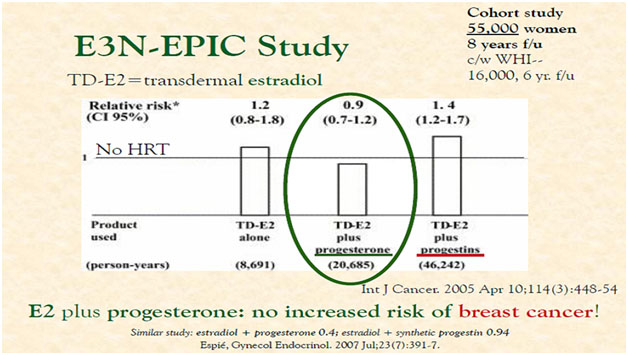
The notion that the Women’s Health Initiative saved lives by warning women off estrogen is patently false. The notion that the Women’s Health Initiative saved lives by warning women off conjugated equine estrogen (CEE, i.e. synthetic estrogen) is true.
A 10-year randomized hormone replacement (estradiol vs. norethindrone) study early after menopause revealed a significantly reduced risk of mortality, heart failure, myocardial infarction without any apparent increase in risk of cancer, venous thromboembolism and stroke in the natural (estradiol) population. (16)
A study of women treated with and without hormone replacement therapy after breast cancer revealed a 33 percent 10 year all mortality rate in the non-hormone users, a 12 percent mortality rate in non-estrogen hormone users, and a 6 percent (94 percent survival) rate in women who were treated with natural estrogen, testosterone and natural progesterone. (17)

Women with early breast cancer should be offered hormone replacement after a full explanation of the risks and benefits. (18)
Indeed, natural or bioidentical hormone replacement therapy, unlike Conjugated Equine Estrogen (Premarin), is safe and effective for climacteric symptoms, as a preventative of long-term degenerative diseases, osteoporotic fractures, cardiovascular disease, diabetes mellitus, and cognitive impairment. Non-oral bioidentical estrogens do not exhibit increased incidence of venous thromboembolism (VTE) and improves blood pressure control. Bioidentical Estrogen and (Natural Progesterone, see paper on Natural vs. Synthetic Progesterone) offer the peri and postmenopausal women significant quality of life advantages. (19)
Ethinyl Estradiol, the “estrogen” in birth control pills, cannot be inactivated by normal oxidation. It is 12,000 to 60,000 times more potent than bioidentical estradiol by weight and is thrombogenic. Oral Ethinyl Estrogen carries twice the risk of deep vein thrombophlebitis and pulmonary emboli.
Transdermal estradiol carries none of these risks.
Mortality from estrogen avoidance in hysterectomized women aged 50-59 without estrogen replacement over a 10-year period starting 2002 revealed an excess mortality from myocardial infarction and breast cancer. Anywhere from 18,000-91,000 died prematurely in this study due to a lack of estrogen (20)
Indeed, natural or bioidentical hormone replacement therapy, unlike Conjugated Equine Estrogen (Premarin), is safe and effective for climacteric symptoms, as a preventative of long-term degenerative diseases, osteoporotic fractures, cardiovascular disease, diabetes mellitus, and cognitive impairment. Non-oral bioidentical estrogens do not exhibit increased incidence of venous thromboembolism (VTE) and improves blood pressure control. Bioidentical Estrogen and (Natural Progesterone, see 4 D. Progesterone) offer the peri and postmenopausal women significant quality of life advantages. (21)
Estrogen Self-Assessment(22)
| S/S Estrogen Deficiency | S/S Estrogen Excess |
| Poor /Nonexistent Libido
Drooping Breasts Vaginal Dryness Urinary incontinence/Infections Hot Flashes Night Sweats Brain Fog Memory Issues Irregular Menstrual Cycles Amenorrhea Thinning Skin Wrinkles Especially Around Mouth Increased Insulin Resistance Osteoporosis Diabetes Elevated Lipids Heart Disease
|
Fluid Retention
Cervical Dysplasia/Fibroids Hypothyroidism Fatigue Insomnia/Poor Sleep Bloating Anxiety/Fear Breast Swelling/Tenderness Severe Headaches Excess Menstrual Bleeding Weight Gain Increased Breast Cancer Incidence
In Men Breast Enlargement Prostate Enlargement Difficulty Urinating Increased Emotional Lability Tearfulness
|
Estrogen Quiz (23)
6I am depressed.012347I have vaginal dryness.012348My thinking is foggy.012349I have wrinkles around my lips.0123410I have less interest in sex.01234
| Never | Always | |||||
| 1 | I am losing hair on top of my head. | 0 | 1 | 2 | 3 | 4 |
| 2 | I have hot flashes. | 0 | 1 | 2 | 3 | 4 |
| 3 | I have night sweats. | 0 | 1 | 2 | 3 | 4 |
| 4 | My breasts are droopy. | 0 | 1 | 2 | 3 | 4 |
| 5 | I feel tired constantly. | 0 | 1 | 2 | 3 | 4 |
Add up your Overall Score ____________: 10 or less: Satisfactory level. Between 11 and 20: Possible Estrogen Deficiency. 21 or greater Probable Estrogen deficiency
References
- Thicken, D. “I Ching and Cycles of Jing,” Acupuncture Today, February, 2004, Vol. 5, Issue 2. http://www.acupuncturetoday.com/mpacms/at/article.php?id=28397
- Windham, GC, et al Cigarette smoking and effects on menstrual function. Obstetrics Gynecology,1999;93:59-65
- Gordon, Mark L. Principles of Interventional Endocrinology. Physician’s Guide to Anti-Aging and Regenerative Medicine; 2009, 1 (74-75)
- Gordon, Mark L. Principles of Interventional Endocrinology. Physician’s Guide to Anti-Aging and Regenerative Medicine; 2009, 1 (75)
- Lucy the Elephant, On the Beach in Margate, New Jersey, Three towns down from Atlantic City. Built in 1881 as a Lucy the Elephant is a six-story elephant-shaped example of novelty architecture, constructed of wood and tin sheeting in 1881 by James in Margate City, Atlantic County, New Jersey, United States, two miles (3.2 km) south of Atlantic City, in an effort to sell real estate and attract tourists. Today, Lucy is a tourist attraction. Guided tours take visitors into the building through the spiral staircase in the left rear leg up into the interior, then up again into the howdah to see views of Margate, the Atlantic City skyline, and the Atlantic Ocean.
- https://www.nhlbi.nih.gov/whi/
- Klein R, The Composition of Premarin. J. Fertility 43:223
- Smith, P., What You Must Know About Women’s Hormones. Garden City Park, NY: Square One Publishing, 2010.
- Novensa, L., et al., “Equine estrogens impair nitric oxide production and endothelial nitric oxide synthase transcription in human endothelial cells compared with the natural 17(beta)-estradiol,” Hypertension 2010; 56(3):405-11.
- (Jonas HA et al, Ann Epidemiol, 1996, 6 (4) : 314-23)
- Mueck AO. Et al. Postmenopausal hormone replacement therapy and cardiovascular disease: the value of transdermal estradiol and micronized progesterone. Climacteric. 2012 Apr;15 Suppl 1:11-7
- Schairer C et al. Epidemiology, Jan 1997, Volume 8 Number 1
- Batur, P et al. Menopausal Hormone Therapy in Women with Breast CA. Maturitas 53(2006)123‐132
- Durna, E et al. Breast Cancer in Premenopausal Women: recurrence and survival rates and relationship to hormone replacement therapy. Climacteric 2004; 7:284‐291.
- Fournier A. Unequal risks for breast cancer associated with different hormone replacement therapies: results from the E3N cohort study. Breast Cancer Res Treat. 2007 Feb 27, 36
- Schaerbeek et al Effect of hormone replacement therapy on cardiovascular events in recently postmenopausal women: randomized trial. BMJ 2012;345
- Natrajan PK, Soumakis K., Gambrell RD Jr., Estrogen replacement in women with previous breast cancer. J. obstet. Gynecol. 1999:181(2):288-95. Georgia, USA.
- Natrajan PK, Soumakis K., Gambrell RD Jr., Estrogen replacement in women with previous breast cancer. J. obstet. Gynecol. 1999:181(2):288-95. Georgia, USA
- L’hermite M et al. Could transdermal estradiol + progesterone be a safer postmenopausal HRT? A review. Maturitas. 2008 Jul-Aug;60(3-4):185-201.
- Sarrel P el al. The Mortality Toll of Estrogen Avoidance: An Analysis of Excess Deaths Among Hysterectomized Women Aged 50 to 59 Years. Am J Public Health July 18, 2013: e1-e6.
- Gordon, Mark L. Principles of Interventional Endocrinology. Physician’s Guide to Anti-Aging and Regenerative Medicine; 2009, 1 (125-127)
- Tai, P., 8 Powerful Secrets to Anti-Aging; United Writers Press Inc., Tucker, Ga, 2007;144.
- Hertoguhe, T;, Hormone Deficiency Quiz; Lecture Notes BHRT Lecture Series, February 25-28, 2015, p. 6

